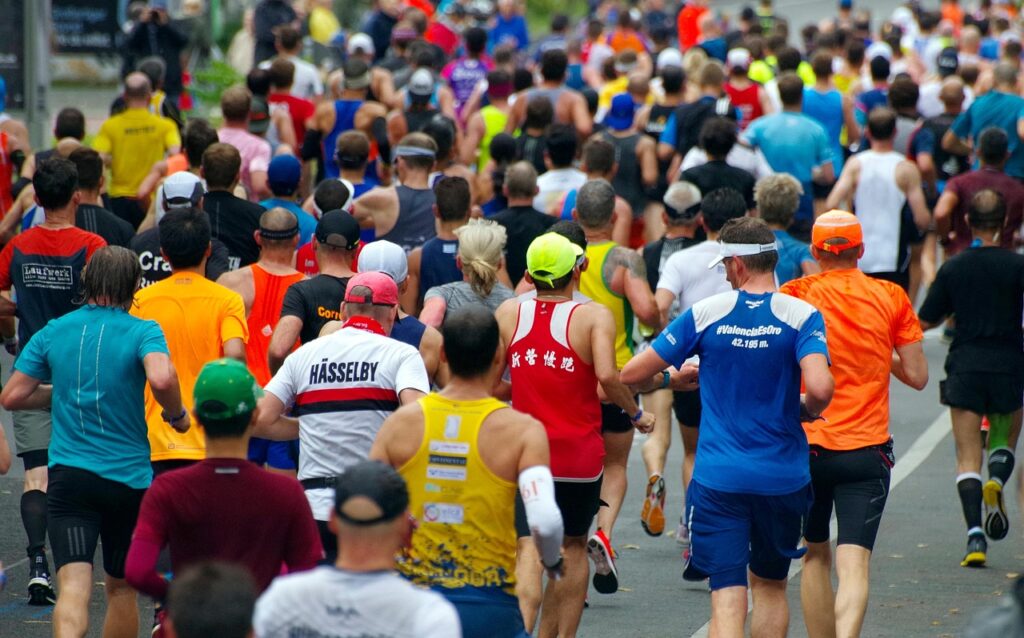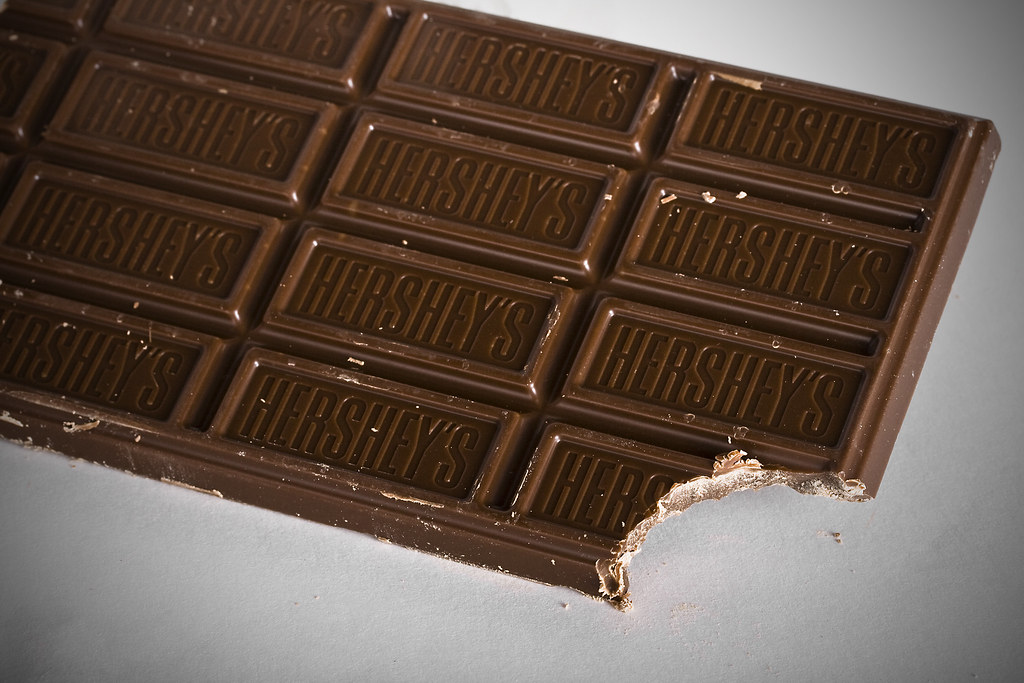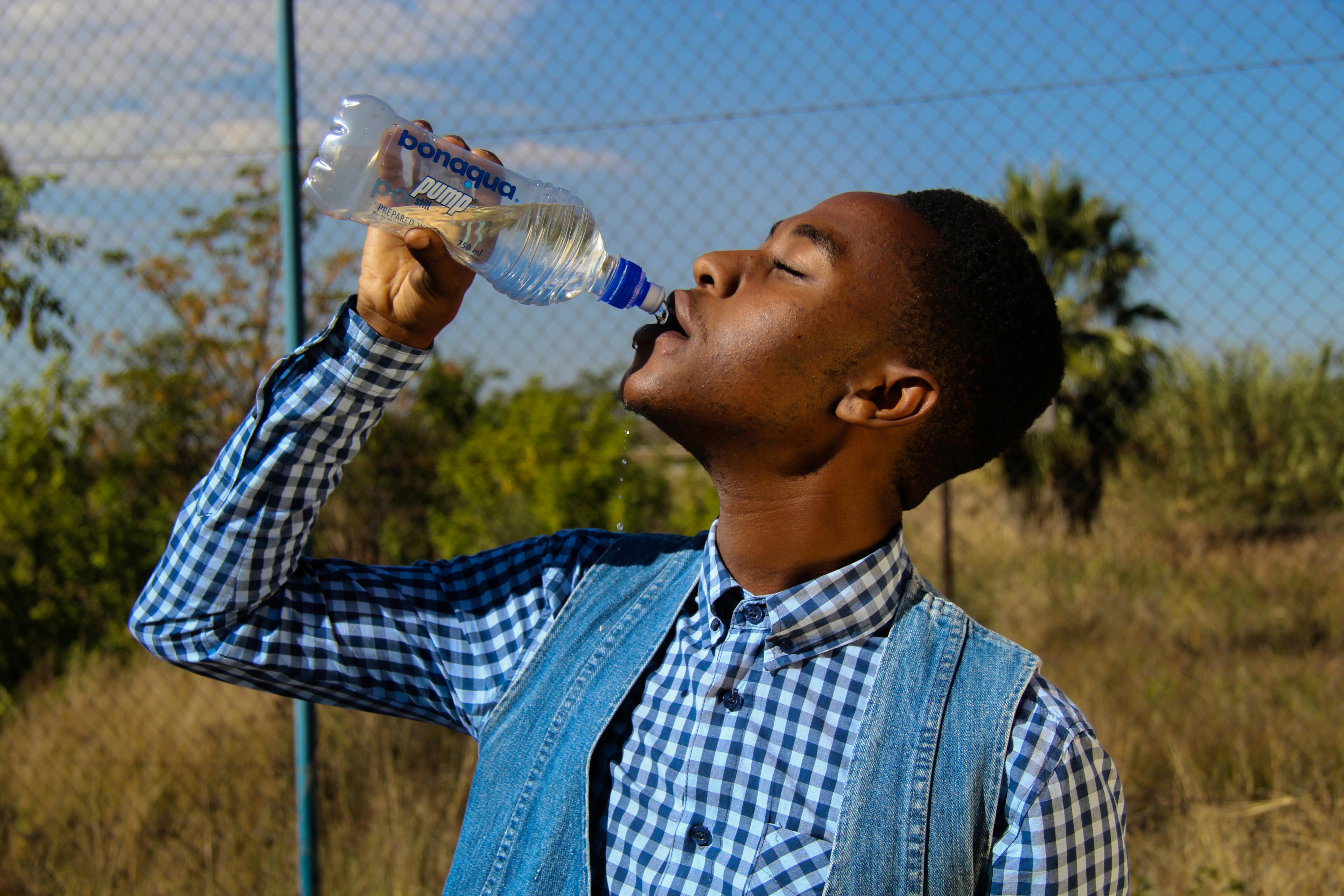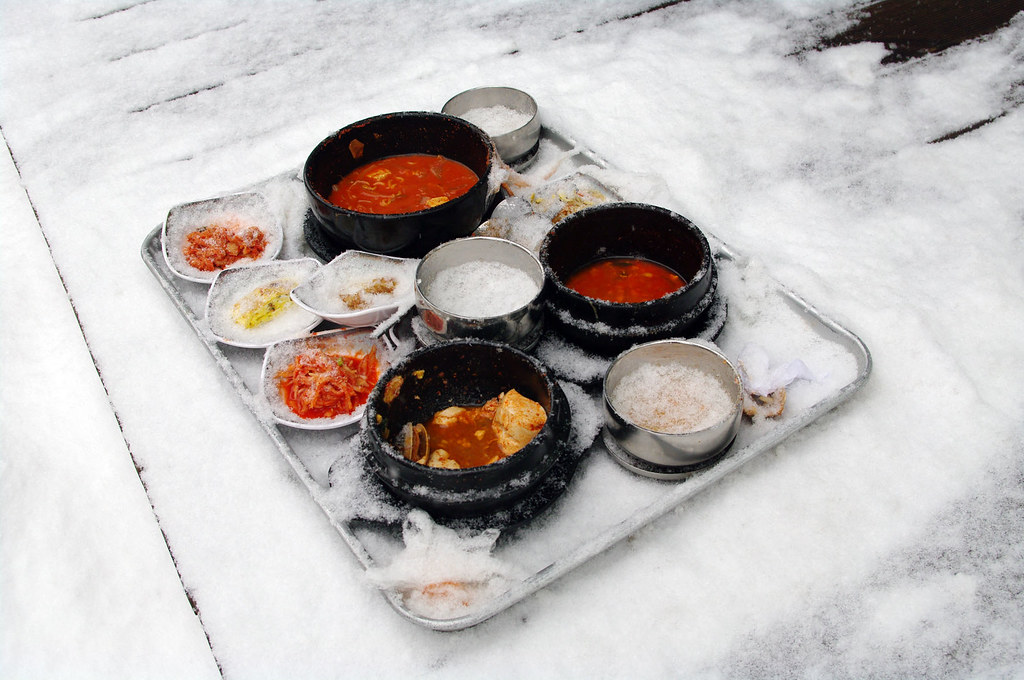
If you’re hitting the pavement, whether for a casual jog or a full-blown marathon, you already know that physical training is paramount. But here’s the insider secret many runners learn the hard way: your nutrition strategy is just as crucial, if not more so, than your mileage. You can log countless hours on the road, yet if your diet isn’t dialed in, you’re not just underperforming; you’re risking injury, fatigue, and even a DNF on race day.
It’s a common misconception that simply ‘eating healthy’ or ‘burning enough calories’ covers all your bases as a distance runner. The truth is, the specific demands of marathon training and racing require a highly nuanced approach to diet. There are subtle yet significant nutritional missteps that can derail even the most dedicated athlete, turning months of hard work into a frustrating experience.
Having seen countless runners, and experienced my own share of trial and error, I’ve gathered the essential insights into the most prevalent diet mistakes. These aren’t just minor oversights; they are critical errors that seasoned marathoners meticulously avoid. By understanding and addressing these pitfalls, you can optimize your performance, accelerate your recovery, and truly unlock your full potential on the course. Let’s dive into the first seven of these crucial mistakes, focusing on the preparation in the weeks and days leading up to your big race.

1. **Not Incorporating Intra-Race Nutrition into Training**This first mistake is a classic, and one that trips up many enthusiastic runners: failing to integrate your race-day fueling strategy into your actual training sessions. It’s easy to focus solely on mileage and pace, assuming that come race day, you’ll just grab whatever’s at the aid station and be fine. However, your body isn’t a machine that can simply switch fuel sources without prior conditioning; it needs to learn how to digest and utilize energy while under physical stress.
The critical error here lies in expecting your digestive system to perform optimally with unfamiliar or unpracticed foods and liquids during a high-intensity event like a marathon. Without prior exposure in training, you run a significant risk of gastrointestinal distress, which can manifest as cramping, nausea, or even unwelcome bathroom breaks that can sabotage your race performance. The stress of race day itself can exacerbate these issues, making a well-rehearsed fueling plan indispensable for sustained effort.
The solution is straightforward yet often overlooked: make intra-race nutrition a cornerstone of your long training runs, especially in the 6-12 weeks leading up to the marathon. The aim is to consume approximately 60-90g of carbohydrates per hour during the race, with some athletes potentially pushing this up to 120g per hour depending on their individual needs and tolerance. This isn’t a target to hit only on race day, but rather a practice to integrate into your preparation.
Start experimenting with the actual items you plan to use on race day—be it energy drinks, gel tubes, fruit snacks, or other quick blood-glucose boosters. Practice accessing and ingesting them smoothly without breaking stride, much like you would during the actual marathon. This adaptive process allows your body to get accustomed to the type and timing of fuel, identify the formulas that work best for your system, and ultimately ensures you can maintain your energy levels without digestive surprises when it matters most.

2. **Not Monitoring Fluid Intake and Sweat Rate During Training**Another pervasive error among marathon hopefuls is the lack of personalized fluid monitoring during training. Many runners approach hydration with a generalized mindset, perhaps drinking when they feel thirsty or simply mimicking what others do. This oversight is particularly dangerous because every individual’s sweat rate and electrolyte loss are unique, profoundly influenced by factors like environmental conditions, exercise intensity, and individual physiology.
Excessive dehydration can severely impair performance, a fact underscored by the guideline that a loss of greater than 2-3% of body mass in hot conditions, or 3-4% in cooler conditions, will significantly hinder your abilities. On race day, relying solely on aid stations—which are often spaced out and can be crowded—is a gamble. If you haven’t calculated your personal fluid needs, you’re at a high risk of under-hydrating, leading to fatigue, reduced endurance, and diminished cognitive function as the miles tick by.
To sidestep this pitfall, it’s imperative to actively monitor your sweat rate and fluid intake during your training sessions. A practical approach involves weighing yourself before and after long runs to estimate fluid loss, and then working to replenish it effectively. This diligent practice helps you develop a precise hydration strategy, enabling you to carry or access the right amount of fluids to maintain optimal performance levels, irrespective of aid station availability.
Consistent monitoring also helps your body adapt to taking in fluids while running, minimizing the risk of stomach upset. By understanding your unique needs, you ensure your body is always primed and ready for any race day scenario, having built a robust hydration foundation throughout your training regimen.
Read more about: Beyond Instinct: 14 Cutting-Edge Ways Pro Athletes Engineer Victory Through Data Analytics

3. **Eating in a Calorie Deficit**While the desire to achieve an optimal race weight is completely understandable, a critical mistake some runners make is eating in a calorie deficit, especially during periods of high training volume. This is a common trap for those looking to “lose weight faster,” thinking that cutting calories will accelerate their body composition goals. However, for a marathon runner, this strategy is not just suboptimal; it can be downright dangerous and counterproductive.
When your training demands are high, a calorie deficit starves your body of the essential energy needed for recovery, adaptation, and muscle repair. This creates a precarious situation where you significantly increase your risk of muscle or bone injuries, including debilitating stress fractures. Your body is already under immense stress from the physical exertion of running, and denying it the necessary fuel prevents it from rebuilding and strengthening, making you vulnerable to breakdown.
In fact, undereating carbohydrates can be particularly hard on your body and affect your recovery after runs. Running uses both glucose circulating in the blood and glycogen stored in your liver and muscles. Glycogen acts as the primary fuel for endurance exercise, and eating plenty of carbs helps ensure these energy stores are ready to support your training. When those stores get too low, runners are more likely to run out of energy and “burn out” or “hit a wall” during training.
The smarter, “Insider” approach is to cycle your energy intake throughout the year, focusing on achieving your race weight during non-competition periods, or at least ensuring adequate energy availability during the high-volume training blocks. It is crucial to avoid dietary deficiencies, paying particular attention to sufficient protein and carbohydrate intake, which are vital for recovery and fuel. Additionally, ensure you’re getting enough vitamin C, D, copper, omega-3 fatty acids, and calcium to support overall health and bone integrity. Your body needs to be nourished to perform and recover, not deprived.
Read more about: Unmasking the Metabolic Saboteurs: 14 Sneaky Habits Quietly Killing Your Metabolism and What to Do About Them

4. **Not Carb Loading Sufficiently**For anyone undertaking a marathon, insufficient carbohydrate loading in the days leading up to the event is a glaring mistake that can directly impact performance. Many casual runners might dismiss carb loading as unnecessary or misunderstand its mechanics, but for a distance event, it’s strongly recommended. The fundamental principle is simple: carbohydrates are your primary fuel source, and glycogen is the stored form of that fuel in your muscles and liver—effectively, the petrol in your car’s tank.
Failing to adequately carb load means your “tank” will be far from full at the start line. This drastically increases the risk of “hitting the wall” or experiencing severe fatigue as your body runs out of its preferred energy source during the latter stages of the race. This isn’t just about feeling tired; it’s about your muscles literally running on fumes, leading to a significant drop in pace and overall performance, and making the final miles a grueling ordeal.
The actionable fix involves a strategic increase in carbohydrate intake for 2-3 days preceding your race. Aim for an intake of 5-12g of carbohydrates per kilogram of body weight per day, with a strong recommendation for at least 8g/kg if you’re running a marathon. This period allows your body to maximize its glycogen stores, ensuring you have ample readily available energy to power you through the entire distance.
This deliberate practice ensures that your body has maximized its glycogen stores, which are crucial for endurance. While carb loading is beneficial for those preparing for a race, it’s equally important during this time to allow your body to rest and give it sufficient opportunity to store what you are ingesting. In contrast, casual runners likely do not need to carb load, finding that ensuring their day-to-day diets include extra carbohydrates is sufficient.
Read more about: Consumer Alert: 14 Critical Mistakes That Are Secretly Killing Your Car’s Transmission

5. **Excessive Fibre Intake**While a diet rich in fiber is generally beneficial for health and keeps the bowel regular for athletes in training, maintaining excessive fiber intake in the days immediately preceding a marathon is a mistake that can lead to race day complications. Many runners overlook this crucial adjustment, sticking to their usual high-fiber diet right up until the morning of the event, unaware of the potential for digestive upset.
The problem with high fiber close to race day is that it increases bowel movements and can lead to unwanted gas and cramping during the race itself. The last thing any marathon runner wants is to be interrupted by digestive issues or to have to make unscheduled stops to use the toilet. Such disruptions not only cost precious time but can also cause mental stress and discomfort, detracting significantly from your performance and enjoyment of the event.
To avoid this, the insider advice is to consciously reduce your fiber intake in the days leading up to the race, typically alongside your carb-loading efforts. Focus on simple carbohydrates such as white rice, white pasta, and white bread, which are low in fiber and easily digestible. These choices help to minimize intestinal residue and promote a calmer digestive system as you approach the starting line.
While high-fiber vegetables should be temporarily avoided, some low-fiber options like zucchini, tomatoes, and olives are generally well-tolerated and can provide essential nutrients without the risk of gastrointestinal upset. The goal is to ensure ease of digestion and minimize any potential for discomfort, allowing your body to focus its energy on running, not on processing heavy foods.
Read more about: Beyond the Hype: 14 Enduring Food & Health Myths That Men Need to Stop Believing Right Now

6. **Ignoring Hydration Practices**It’s a common misconception that hydration only becomes critical on race day itself. Many runners meticulously plan their in-race fluid strategy but neglect their hydration practices in the crucial days leading up to the event, especially during the carb-loading phase. This is a significant mistake, as effective race-day hydration is built upon a foundation of consistent and adequate fluid intake beforehand.
The reason this oversight is so problematic ties directly into your carb-loading efforts. As the context explains, for every gram of carbohydrate consumed, approximately 3 grams of water are retained, primarily in the muscles. If you’re diligently carb-loading but failing to increase your water intake proportionally, you risk becoming dehydrated even as your glycogen stores are filling. This paradox can leave you feeling sluggish and can compromise the very energy reserves you’re working so hard to build.
To combat this, you must prioritize sufficient water intake in the days preceding your race. A practical guideline is to multiply 40 milliliters by your body weight in kilograms to get a rough starting point for your daily water consumption. This conscious effort ensures that your body is adequately hydrated to support the increased carbohydrate storage and maintain optimal physiological function.
This consistent practice also plays a crucial role in preventing high sodium intake and insufficient potassium intake, which contribute to high blood pressure, thereby increasing the risk of heart disease and stroke. By building a strong hydration foundation, you ensure you start the race fully prepared, not playing catch-up, and support your cardiovascular health long-term.
Read more about: Behind the Workout: When Persistent Injuries Demand Professional Intervention

7. **Drinking Too Much Water on the Morning of the Race**The morning of a marathon often brings a flurry of nervous energy and a heightened awareness of every detail, including hydration. However, a frequently made mistake is over-consuming water in the final hours or minutes before the race starts. The anxiety to be perfectly hydrated can lead runners to drink excessive amounts, which can have detrimental and even dangerous consequences.
The immediate risks of drinking too much water are stomach issues, which can include bloating, sloshing, and even nausea, severely impacting your comfort and performance right from the gun. More alarmingly, excessive plain water intake can lead to hyponatremia, a dangerous condition where sodium levels in the blood become too low. This can have severe health repercussions and, in extreme cases, can even be fatal, making it a critical mistake to avoid.
Instead of glugging down litres of water, follow a more measured approach based on personal needs. Aim to consume approximately 500 to 600 milliliters of water or a sports drink about 2 to 3 hours before exercise. This gives your body ample time to process the fluids and for any excess to be eliminated, reducing the risk of mid-race bathroom breaks or stomach upset.
Then, a smaller top-up of 200 to 300 milliliters of water or a sports drink 10 to 20 minutes before the race begins should suffice. Remember, these are general guidelines, and individual variations mean it’s best to have practiced this timing and volume during your training to find what works best for your body, ensuring optimal comfort and safety on race morning.
Now that we’ve navigated the crucial preparation leading up to race day, it’s time to shift our focus to the big event itself and the equally vital recovery period. Many runners, despite meticulous planning for weeks, often stumble on race day or make critical errors post-finish line that can negate their hard work. These aren’t just minor missteps; they are common pitfalls that can turn a triumphant finish into a struggle, or worse, compromise your recovery.
Understanding these race-day and post-race nutritional errors is the ultimate insider advantage. It’s about ensuring all those miles you’ve logged and all that dedicated preparation culminate in your best possible performance and a swift return to health. Let’s delve into the next seven crucial mistakes, guiding you through the final moments before the gun, the challenges on the course, and the essential steps to take once you’ve crossed that finish line.
Read more about: Unlock Your Peak Performance: 13 Common Diet Mistakes Professional Athletes Confidently Conquer

8. **Carb-Loading on the Morning of the Race**The excitement and nerves on race morning are palpable, and for some, it triggers a last-minute panic to top off energy stores. This often leads to the mistake of attempting a heavy carb-load right before the race starts. While sufficient carbohydrate intake is paramount for endurance, doing it intensely just hours before the gun can be profoundly counterproductive and even derail your entire race.
The problem here is simple yet devastating: attempting to digest a large quantity of carbohydrates, especially heavy ones, too close to the start line can lead to significant gastrointestinal distress. You might experience bloating, cramping, or even nausea, issues that can severely impact your comfort and performance when you need to be focusing solely on your running. Your digestive system needs time to process food effectively, and high-stress situations like a marathon exacerbate these challenges.
The insider solution is to approach your pre-race meal strategically, aligning it with your body’s digestive rhythm. Aim for a carb intake of approximately 2-3 grams per kilogram of body weight, consumed about 2-3 hours before the race commences. This crucial timing allows for proper digestion and absorption, ensuring your energy stores are topped off without causing stomach upset.
Furthermore, it’s vital to keep the fat, fiber, and dairy content of this meal very low. These components can slow digestion and increase the risk of GI issues, which is precisely what we want to avoid. If your window to eat before the race is tighter, say only an hour, reduce your intake to about 1 gram of carbohydrates per kilogram of body weight to minimize any potential digestive discomfort and ensure a smooth start.

9. **Trying Something New to Eat on the Morning of the Race**Race day often feels like a special occasion, tempting runners to try something new, perhaps a ‘superfuel’ they’ve heard about or a breakfast option that feels celebratory. However, introducing an unfamiliar food on race morning is an egregious error that seasoned marathoners absolutely avoid. Your body thrives on routine and predictability, especially under the intense physiological and psychological stress of a marathon.
The risk of this mistake lies in the unpredictable nature of your digestive system when presented with new stimuli. An untested breakfast choice could easily lead to unforeseen gastrointestinal issues such as cramps, heartburn, or unwelcome trips to the porta-potty, which can completely sabotage your race performance and mental focus. Your body hasn’t had the opportunity to adapt to this new food, making race morning the worst possible time for experimentation.
The fix is straightforward and non-negotiable: your pre-race meal should be a tried and true option. This means you should have rigorously tested your race-day breakfast at least six weeks out from the marathon, ideally during your longest training runs. By practicing with the exact foods, quantities, and timing, you build confidence and ensure your body knows exactly how to handle it.
Stick to simple, easily digestible carbohydrates that you know your stomach tolerates well. Think white bread, bananas, or plain oatmeal – anything that won’t surprise your system. This disciplined approach eliminates unnecessary variables and reduces the risk of any last-minute digestive drama, allowing you to focus entirely on the race ahead with peace of mind.
Read more about: Swing Strong, Play Long: 14 Simple Ways to Prevent Common Tennis and Golf Elbow Injuries

10. **Trying Out a New Source of Carb During the Race**Once the race is underway, maintaining consistent energy levels through in-race fueling is paramount. However, a critical mistake some runners make is trying out a new energy gel, liquid, or another carbohydrate source that they haven’t used in training. The appeal of a novel flavor or a promise of ‘extra energy’ can be strong, but this is one temptation you must resist at all costs.
Introducing an untested carbohydrate source during the race is akin to throwing a wrench into a finely tuned engine. Your body’s digestive system is already working hard under physical stress, and an unfamiliar compound can easily lead to digestive issues. This includes cramping, nausea, or an urgent need for a bathroom break, all of which can severely impact your pace, enjoyment, and ultimately, your ability to finish strong, potentially leading to a DNF (Did Not Finish).
The actionable advice here is to treat your intra-race nutrition with the same reverence as your long training runs. During your training, especially the long runs in the 6-12 weeks prior to the marathon, you should be consistently practicing with the exact energy gels, drinks, or fruit snacks you intend to use on race day. This allows your body to adapt and identifies the formulas that work best for your unique system.
By integrating your fueling strategy into your training, you not only condition your digestive system but also become adept at accessing and ingesting these items smoothly without breaking stride. This diligent practice ensures that when race day arrives, your body is accustomed to the fuel, minimizing any risk of digestive surprises and allowing you to maintain optimal energy levels throughout the entire marathon.
Read more about: Beyond Windows: Unpacking the Strategic Pillars That Propelled Microsoft to a Trillion-Dollar Valuation

11. **Drinking Too Much During the Race**While hydration is absolutely critical during a marathon, it’s a double-edged sword: insufficient fluid intake is harmful, but so is excessive consumption. A surprisingly common mistake among runners, especially those driven by anxiety or an overzealous approach to hydration, is drinking too much water during the race. This can lead to a cascade of problems that are just as detrimental as dehydration.
The immediate consequences of over-drinking are often gastrointestinal in nature. You might experience a sloshing sensation in your stomach, bloating, or even nausea, making running incredibly uncomfortable and distracting. Beyond discomfort, there’s a more serious, potentially fatal risk: hyponatremia. This condition occurs when sodium levels in the blood become dangerously low due to excessive plain water intake, leading to severe health complications. Moreover, frequent bathroom stops mean losing precious time and breaking your rhythm.
The insider recommendation for in-race hydration is a balanced and consistent approach, rather than sporadic, large gulps. Aim to consume somewhere between 400 and 800 milliliters of fluid per hour, though this range can vary based on individual sweat rates and environmental conditions. It’s crucial to break this intake up across the hour, taking smaller amounts more frequently.
For example, aiming for 100-300 milliliters every 15-20 minutes is a practical strategy that helps prevent your stomach from becoming overly full and reduces the chance of digestive issues. This steady, moderate intake allows your body to absorb fluids effectively, maintain electrolyte balance (especially if using sports drinks), and keeps you running comfortably and safely towards the finish line.
Read more about: Jennifer Aniston’s Brave Stand: Unpacking Decades of Scrutiny, Fertility Struggles, and Her Powerful Message to Women Everywhere

12. **Skipping Fuelling Stations**Marathon courses are meticulously planned with fuelling and hydration stations for a reason – they are vital lifelines designed to support runners throughout the grueling distance. However, a common mistake, often driven by a desire to save time or maintain pace, is to skip these crucial aid stations. This oversight can have significant repercussions on both performance and safety.
The primary problem with bypassing fuelling stations is the risk of insufficient intake of carbohydrates and water. When you miss a station, you create a deficit that rapidly accumulates over the miles, leading to a depleted energy reserve and increasing dehydration. Runners might then attempt to compensate by taking in large amounts of fluid or fuel at a later station, which can overwhelm the digestive system and cause gastrointestinal distress, ironically costing even more time and comfort.
The solution is to embrace and utilize every fuelling station as part of your strategic race plan. Regular, moderate intake of fluids and carbohydrates from these stations is far easier on your digestive system than trying to play catch-up. Even if you’re carrying some of your own fuel, pausing briefly or slowing down to grab a cup of water or an electrolyte drink can make a monumental difference.
Consider each station an opportunity to refuel and rehydrate without interruption, ensuring a steady supply of energy and preventing the dreaded ‘bonk’ or severe dehydration. By consistently topping off your internal resources, you maintain optimal performance levels, mitigate the risk of late-race fatigue, and ensure a more comfortable and strong finish.

13. **Delaying Nutrient Intake After the Race**The moment you cross the finish line, a wave of relief and exhaustion often washes over you. Many runners, feeling either too tired or too nauseated to eat, make the critical mistake of delaying their nutrient intake after completing a marathon. This seemingly minor oversight can significantly impact your recovery, turning a well-earned finish into a longer, more painful ordeal.
Waiting too long to eat hinders your body’s ability to kickstart the crucial recovery processes. Your glycogen stores are severely depleted, and your muscles have experienced microscopic damage. Without prompt replenishment of carbohydrates and protein, your body struggles to restore energy reserves and repair muscle tissue, leading to prolonged recovery times, increased muscle soreness, and a greater risk of post-race fatigue and illness. The ‘golden hour’ for recovery is real and should not be ignored.
The actionable advice is to prioritize immediate post-race nutrition, even if you don’t feel ravenous. Aim to consume at least 1 gram of carbohydrates per kilogram of body weight within the first hour after finishing the marathon, alongside approximately 25 grams of protein. This combination is essential for quickly replenishing glycogen stores and providing the amino acids necessary for muscle repair.
Think of easy-to-digest options like a banana and a protein shake, or a pre-made recovery drink. For example, a 750ml carton of chocolate milk (often referred to as ‘Mooju’ in some contexts) can be an excellent choice for a 75kg runner, offering a good balance of carbs and protein. Continue this focused intake, aiming for a further 3 grams of carbohydrates per kilogram of body weight within four hours post-race, to solidify your recovery foundation.
Read more about: Unlock Your Peak Performance: 13 Common Diet Mistakes Professional Athletes Confidently Conquer

14. **Insufficient Rehydration After the Race**Just as important as immediate nutrient intake is proper rehydration following a marathon. Yet, many runners make the mistake of failing to rehydrate adequately, either by drinking too little fluid or by making poor choices in what they consume. The temptation to celebrate with a creamy pint of Guinness or simply forgetting to actively drink can set back your recovery significantly.
The consequences of insufficient post-race rehydration are profound. Your body has lost a substantial amount of fluid and electrolytes through sweat, and failing to replenish these can lead to continued dehydration, severe electrolyte imbalances, and delayed muscle recovery. Symptoms like persistent fatigue, headaches, and muscle cramps are common indicators of inadequate fluid intake, extending your discomfort and the time it takes to bounce back.
The insider solution is to approach post-race rehydration with a strategic mindset. Focus on fluids that contain electrolytes, which are crucial for restoring your body’s balance. Sports drinks, coconut water, or even plain water supplemented with electrolyte tablets are excellent choices. Avoid celebratory alcoholic beverages or sugary soft drinks as your primary rehydration source, as they can further dehydrate you or provide empty calories.
The most accurate method to guide your rehydration is to weigh yourself before and after the race, then consume approximately 1 to 1.5 liters of fluids for every kilogram of body weight lost as sweat. Aim to drink small amounts frequently rather than attempting to chug a large quantity all at once, which can upset your stomach. Keep monitoring your urine color; it should gradually return to a pale yellow, indicating proper hydration. This diligent rehydration ensures your body is primed for optimal recovery and ready for future challenges.
Embarking on a marathon journey is an incredible feat of endurance, commitment, and self-discovery. But as we’ve seen, it’s a path where every detail, especially your nutritional strategy, can make or break your experience. By understanding and meticulously avoiding these 14 common diet mistakes, you’re not just training your body; you’re building an unparalleled resilience from the inside out. These insights aren’t just tips; they’re the pillars of optimal performance and a smooth, swift recovery. So, armed with this insider knowledge, go forth, conquer your race, and relish in the triumph of a truly well-nourished journey. Happy running, and here’s to many more miles of smart, strong, and injury-free running!



